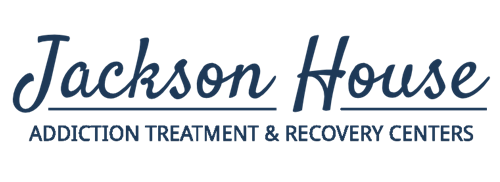Admission Line (866) 396-3655
Helping a Loved One Addicted to Meth: Do’s and Don’ts

Watching a loved one struggle with methamphetamine (meth) can very painful. You may feel helpless and confused about what you can do without making things worse. While you want to step in and help, supporting someone addicted to meth can be challenging. Here, we’ll present some do’s and don’ts of helping a loved one facing meth addiction, with compassion and effectiveness at the core.
Meth Addiction
Meth is a highly powerful and addictive stimulant that affects the central nervous system. It’s known for how rapidly users can become addicts, as well as the severe long-term physical and mental damage it causes. In addition to other negative results, meth use can lead to psychosis, financial ruin, and estrangement.
Causes and Symptoms of Meth Addiction
People may turn to meth for many reasons, whether due to peer pressure, trauma, mental health disorders, or even in a misguided attempt to improve focus or energy. The rush of dopamine and physical pleasure caused by meth creates a powerful and immediate high, which can lead to a destructuve cycle of reuse that ends in dependency.
Common symptoms of meth addiction include:
- Rapid weight loss
- Intense scratching or skin sores
- Tooth decay (“meth mouth”)
- Paranoia and hallucinations
- Violent or erratic behavior
- Insomnia and extreme energy bursts
- Obsessive focus on tasks or routines
- Withdrawal from loved ones and activities once enjoyed
Noting these early signs may help a loved one intervene, potentially helping prevent more severe consequences.
Helping in Cases of Meth Addiction
Helping someone in your life who is struggling with a meth addiction might feel overwhelming. Meth addiction is a complex problem, and not all actions made in an attempt to help may be effective or safe. Following are ideas on do’s and don’ts when it comes to supporting someone addicted to meth.
The Do’s of Helping
Educate Yourself
Start by learning aboutt meth addiction: how it works, its mental health effects, and how it imapcts behavior. Learning more about what your loved one is dealing with can help you act in empathy, not frustration. It’s important to understand that addiction is a disease.
Set Healthy Boundaries
Healthy boundaries are essential for protecting your own mental and emotional health. This can include saying “no” to financial requests or refusing to cover for poor decisions connected to your loved one’s addiction. Boundaries can prevent you from becoming an enabler.
Lead With Compassion
Addiction can change how a person acts. If a loved one addicted to meth lashes out or acts in ways that seem unlike them, make compassion your guiding principle. Instead of harsh judgments, try to be a consistent and understanding presence, showing small acts of kindness and understanding.
Encourage Personal Treatment
Meth addiction is exceptionally difficult ot handle alone. Encouraging a loved one to seek professional treatment is among the best steps you can take. Voice your concerns honestly and support your loved one in finding treatment centers, attending appointments, or beginning the conversation with a healthcare provider.
The Don’ts of Helping
Don’t Belittle Or shame
Blaming and shaming may push people deeper into addiction rather than motivating them to seek recovery. Language that makes your loved one feel worthless or guilty can be counterproductive. The use of “I” statements when expressing how their behavior affects you and your relationship may be helpful.
Don’t Risk Your Safety
Addiction can lead to unpredictable and even dangerous behavior. If this includes violence, threats, or acts that put you in harm's way, keep yourself safe. Your endangerment is not the same as your support. Seeking professional intervention can protect you both.
Don’t Enable The Addiction
Actions like giving money, providing shelter without conditions, or covering for an addict’s behavior can prolong their addiction. Enabling can shelter those with substance addiction from consequences, which may delay the point when they recognize they need help, and may also allow them to deny the seriousness of the situation.
Don’t Dismiss Professional Help
Expert intervention can be effective in helping break down the complex problem that is meth addiction. Your love and support alone may not be enough. Professional treatment programs use structure, medical care, and therapy to provide support for long-term recovery.
The Role of Professional Services
Helping a loved one with meth addiction doesn’t have to be handled alone. With the help of the trained staff at addiction treatment centers, you can help position your loved one and you to get help through the recovery process. Evidence-based treatment like Cogntivie Behavioral Therapy, medically supervised deotx, and long-term aftercare provided by treatment centers are all ways to address meth addiction.
Meth Addiction services From Jackson House
At Jackson House Recovery Centers, we know that meth addiction can affect not just an individual, but their loved ones, too. That’s why our system is based on holistic, evidence-based care, including both the patient and their support system. Our meth recovery programs include a comprehensive range of services such as medical detox, individual and group therapy, mental health treatment, and relapse prevention planning.
With a safe and structured environment, healing is possible. Our team works with each client to address not just the physical dependency itself, but the underlying causes of addiction, while building the strategies that lay the foundation for long-term recovery.
Refer a Loved One Dealing with Meth Addiction
If you’re watching somoene you love spiral into a meth addiction, don’t wait to take action. We are here to help your loved one find their road to recovery. We welcome family members, friends, and concerned individuals to reach out on behalf of someone dealing with meth addiction.
Contact Jackson House Recovery Centers for information about referring a loved one for treatment.
